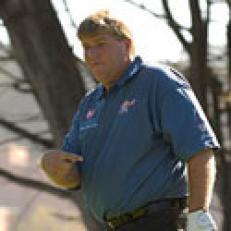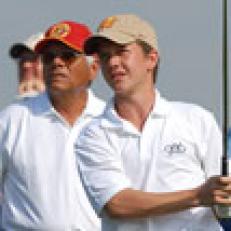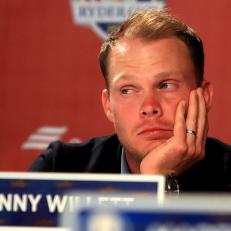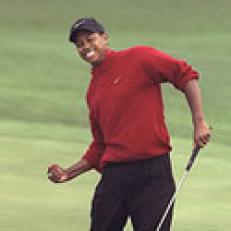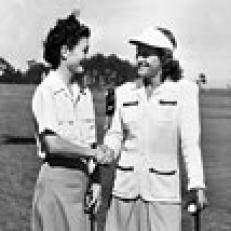My Five: Most Controversial Innovations
Croquet-style puttingOregon pro Bob Duden introduced the style -- in which the player stands astride the line of the putt -- in the early 1960s, using a specifically designed putter. Sam Snead began standing astride, but with a conventional putter that required that he squat to guide the stroke with his right hand. Snead, who had long fought the yips, had some notable success, but controversy ensued when he used the style at the Masters, where Bobby Jones made his disapproval known. In a first-ever prohibition of a specific ball-striking technique, the USGA banned the style in 1967. "We felt it was the only way to eliminate the unconventional styles that have developed in putting," said executive director Joe Dey. "The game of golf was becoming bizarre. It was some other game, part croquet, part shuffleboard and part the posture of Mohammedan prayer." Snead adapted by moving to the side of the ball, keeping the same squat and low right hand, which he called "sidesaddle."
Photo By: Stephen Szurlej
Long putterSenior Tour player Charlie Owens first used the long putter -- a 52-inch model -- in competition in the mid '80s, and won two events in 1986. In 1989, Orville Moody won the U.S. Senior Open with a similar putter, and Rocco Mediate at the 1991 Doral-Ryder Open became the first to win on the PGA Tour with a long putter. All along there have been critics who believe the longer putter -- whether placed under the chin, anchored against sternum or rested against the belly -- should be outlawed. Tom Watson has consistently maintained that "it isn't a golf stroke." But the USGA has taken a more permissive approach than it did on croquet putting, ruling that long putters "are not detrimental to the game. In fact, they may enable some people to play who may not otherwise be able to do so."
Photo By: Bill Fields
Golf Ball SizeIn 1920, the R&A and the USGA -- seeking uniformity -- agreed that the golf ball should be 1.62 inches in diameter and 1.62 ounces. But by 1931 the USGA was concerned about the ball going too far, and instituted a 1.68 diameter ball that weighed only 1.55 ounces -- in essence, the only ball "rollback" in the history of the game. But this "balloon" ball was unpopular because it lost too much distance and was unstable in the wind. The next year, the USGA changed the specifications to 1.68 inches and 1.62 ounces. But the R&A refused to go along and stayed with its smaller ball. The schism remained until 1974, when the R&A made the 1.68 ball compulsory for the British Open. In 1988, it outlawed the small ball all together.
Photo By: David Cannon/Getty Images
ERC DriverAfter the USGA -- but not the R&A -- in 1998 installed a limit on coefficient of restitution (COR) to reduce the so-called "spring-like effect" of titanium-headed drivers, Callaway developed a club that exceeded the limit. The ERC was one of two dozen drivers deemed non-conforming, but when Arnold Palmer, a Callaway endorser, came out in favor of the ERC for "recreational" play, a firestorm ensued. The USGA -- fearing that the wide use of a non-conforming club would erode respect for the rules -- turned against Palmer, removing his signature from letters sent out to recruit new members to the Members Program. "There's one game and there's one set of rules," said USGA executive director David Fay. "We're not inclined to treat the Rules of Golf as if it were some buffet line where we pick and choose."
Photo By: Lenny Ignelzi/AP Photo
Golf CartsAfter its first iteration in 1932, the golf cart began to gain popularity in the 1950s. Because it created a new revenue stream for golf courses, the cart dramatically curtailed the influence of the caddie, choking off a heretofore important portal into the game. Carts have always been banned from all PGA Tour competition other than the Champions Tour. But in 1997, Casey Martin, who because of a circulatory defect in his right leg had been allowed by NCAA officials to use a cart at Stanford, challenged the tour's edict under the Americans with Disabilities Act. He would win the 1998 Lakeland Classic using a cart on the Nike Tour, and in 2001 saw the Supreme Court rule in his favor (7-2). Martin would go on to play in PGA Tour-sanctioned events until 2006, but since then, no other player has won a challenge to the no-cart rule.
Photo By: Vincent Laforet/Getty Images


